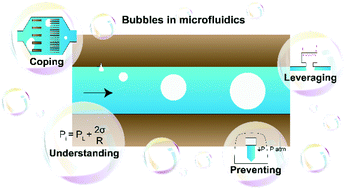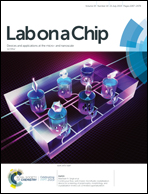Nip the bubble in the bud: a guide to avoid gas nucleation in microfluidics
Abstract
Gas bubbles are almost a routine occurrence encountered by researchers working in the field of microfluidics. The spontaneous and unexpected nature of gas bubbles represents a major challenge for experimentalists and a stumbling block for the translation of microfluidic concepts to commercial products. This is a startling example of successful scientific results in the field overshadowing the practical hurdles of day-to-day usage. We however believe such hurdles can be overcome with a sound understanding of the underlying conditions that lead to bubble formation. In this tutorial, we focus on the two main conditions that result in bubble nucleation: surface nuclei and gas supersaturation in liquids. Key theoretical concepts such as Henry's law, Laplace pressure, the role of surface properties, nanobubbles and surfactants are presented along with a view of practical implementations that serve as preventive and curative measures. These considerations include not only microfluidic chip design and bubble traps but also often-overlooked conditions that regulate bubble formation, such as gas saturation under pressure or temperature gradients. Scenarios involving electrolysis, laser and acoustic cavitation or T-junction/co-flow geometries are also explored to provide the reader with a broader understanding on the topic. Interestingly, despite their often-disruptive nature, gas bubbles have also been cleverly utilized for certain practical applications, which we briefly review. We hope this tutorial will provide a reference guide in helping to deal with a familiar foe, the “bubble”.

- This article is part of the themed collection: Lab on a Chip Recent Review Articles


 Please wait while we load your content...
Please wait while we load your content...